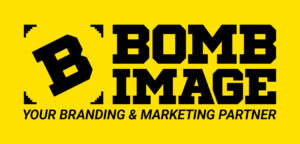Some may think branding your business is easy. Others find it to be complicated and intimidating. Typically, the simplest approach breaks down the main components that make a brand. But where does that start? Many would say that starts with your logo, and while that is a vital piece, it should not be the very first place to start.
When developing your brand, you should take a minute (or maybe several) to think about the core message you want to send to your audience.
- Who is your audience?
- How do you differ from your competition?
- What feelings do you want your brand to evoke?
- What personality or archetype does your brand have?
You can ask many more questions when it comes to creating or recreating your brand. These answers will help you and your designers to select specific elements that will help impact how your customers view you.
Now you can move right along to your logo, right? Wrong. Well, maybe a bit wrong. There’s no cut and dry way to go about creating your brand. But there are still more considerations to make before diving into the deep end.
One of the most important considerations is color. Color? What’s so important about color? Quite a bit actually. Color is one of the elements that helps tie all the different parts of your brand together into a visual identity. It also helps with brand recognition, sometimes even more so than a brand’s logo. Think of the color red. What brands pop into your head? Maybe McDonalds, State Farm, or Target. Now think about the color blue. Did Allstate, Dell, or Oreos come to mind? These brands are so deeply tied to their colors that you don’t need to think about the rest of their branding.
Brands chose their colors because there are psychological responses that people have to different colors. Brands use color to their advantage to push their brand personality to customers.
Advertisement
Ready to discover, unlock, and unleash fresh thoughts and concepts for marketing and branding your business?
Different colors are associated with specific feelings and personalities. Red is seen as bold and exciting, orange as confident and cheerful, yellow as optimistic and warm, green as peaceful and healthy, blue as trusting and dependable, purple as wise and creative, gray as neutral and calm, and black as credible and powerful. Even more words are associated with each color, especially when thinking about the different tints and shades of each hue. Looking back on how you answered questions about what you want your brand to say can help you choose the right color(s) to send that message.
Now a bit of color theory comes into play. How the colors you selected for your brand play together can make or break the message your brand is trying to send. If you want a bold and intense message, consider using warm toned colors like red or orange. If you wanted to push that bold message further, you could also choose a complementary or triadic color (or maybe even black, gray, or white) to offset the main color you selected. Complementary colors are opposite each other on the color wheel (like blue and orange) and triadic colors are three colors equally spaced apart from each other, as if forming a triangle on the color wheel (orange, purple, and green). If you wanted a calmer, more relaxed message in your branding it would be better to consider cooler colors. It would also be a good idea to consider an analogous color scheme (colors right next to each other on the color wheel) to complement your color choice.
Advertisement
Ready to discover, unlock, and unleash fresh thoughts and concepts for marketing and branding your business?
Admittedly, there aren’t hard set rules. Brands with complementary color schemes can achieve calm and soft feelings using desaturated colors. Some with analogous color schemes feel intense and powerful because they use more saturated colors. The more toned down a color scheme is, the softer the emotion it evokes. The more saturated the color, the more intense the emotion.
Also consider what colors your competition is using. Using a too similar color scheme can cause confusion and be detrimental to your customer base. Having a visual outlier — through color palette, logo design, or both is beneficial both as a way to stand out and stay in consumers’ minds easier. It’s a lot harder to remember the subtle differences between similar designs than obviously different designs.
Selecting accessible color schemes is also important. There needs to be enough visual contrast between the values of the colors so that people who are visually impaired or color blind can still interact with your brand.
Look at your current brand strategy, whether it’s for a current business or beginning a new venture. Do the colors you chose best represent the message and brand personality you want customers to see? If not, how could they be changed and adjusted to tell that story? If that’s difficult to answer, we’re here to help!
Co-Authored by Ari Smedley

Click here to discover, unlock, and unleash fresh thoughts and concepts for marketing and branding your business.
Brian Butkowski is the Owner of Bomb Image as well as Brand Advisor & Designer. He makes it easier for clients to deliver the right message to their customers, by Demystifying Branding & Marketing. Because of this, his clients gain better connection and engagement with their customers – which results in greater revenue.
With over two decades of experience guiding small businesses, Brian plans, produces, and executes tactics that utilize clients’ brands, logos, and messaging. He prides himself on being an objective facilitator, utilizing proven processes to draw out clients’ “right answers,” to achieve their branding and marketing goals.
BOMB Image
Demystifying Branding & Marketing
brian@bombimage.com
https://www.linkedin.com/in/
bombimage.com
P: 216.759.5700
Header Image Credit: Jess Loiterton on Pexels.com


